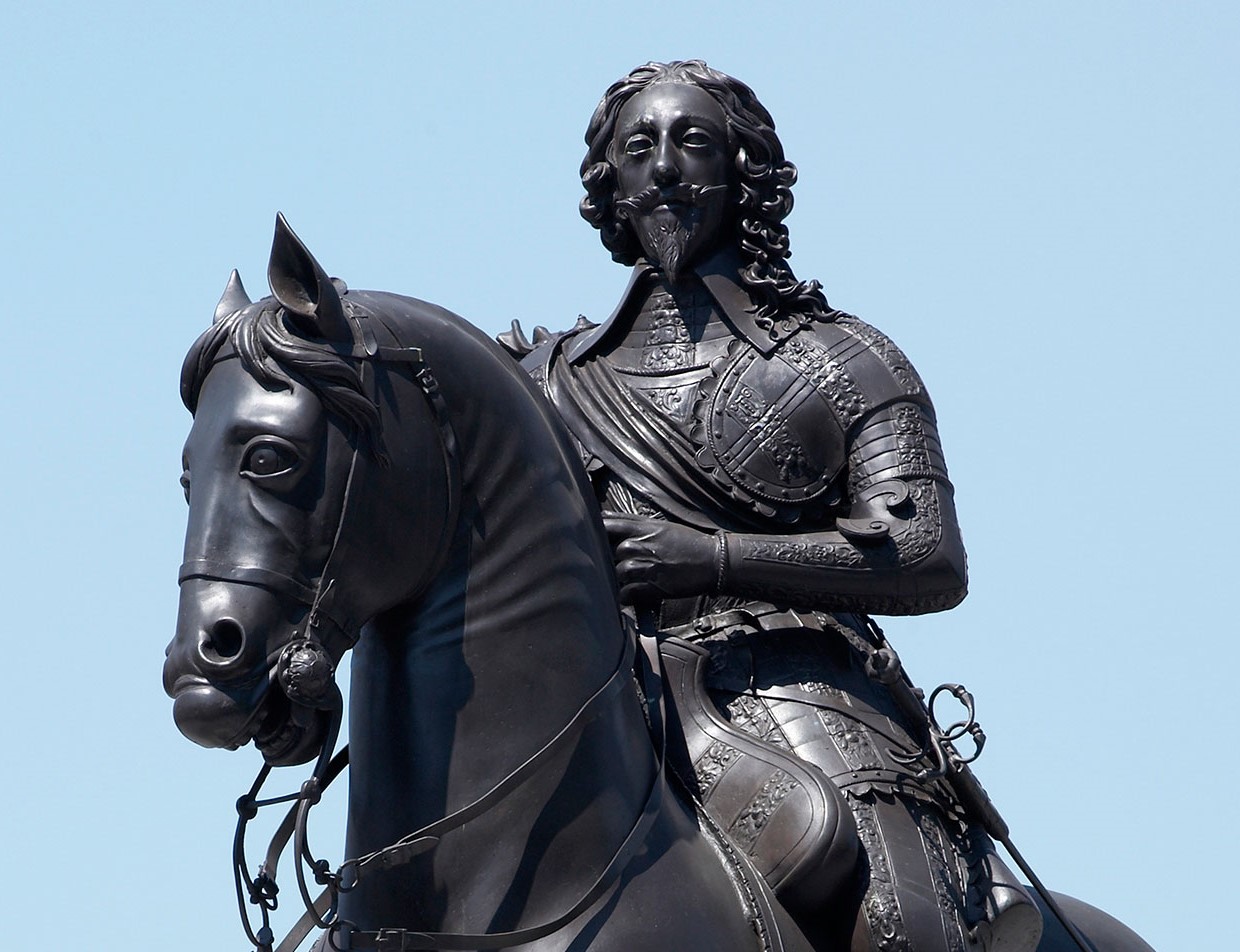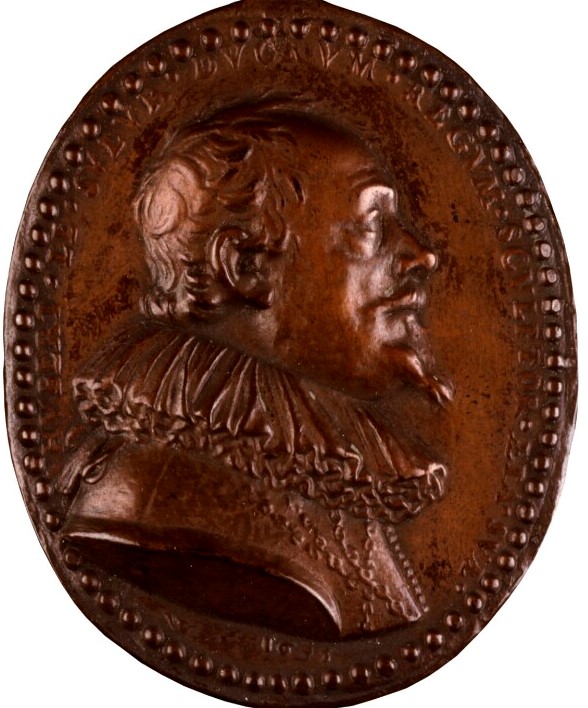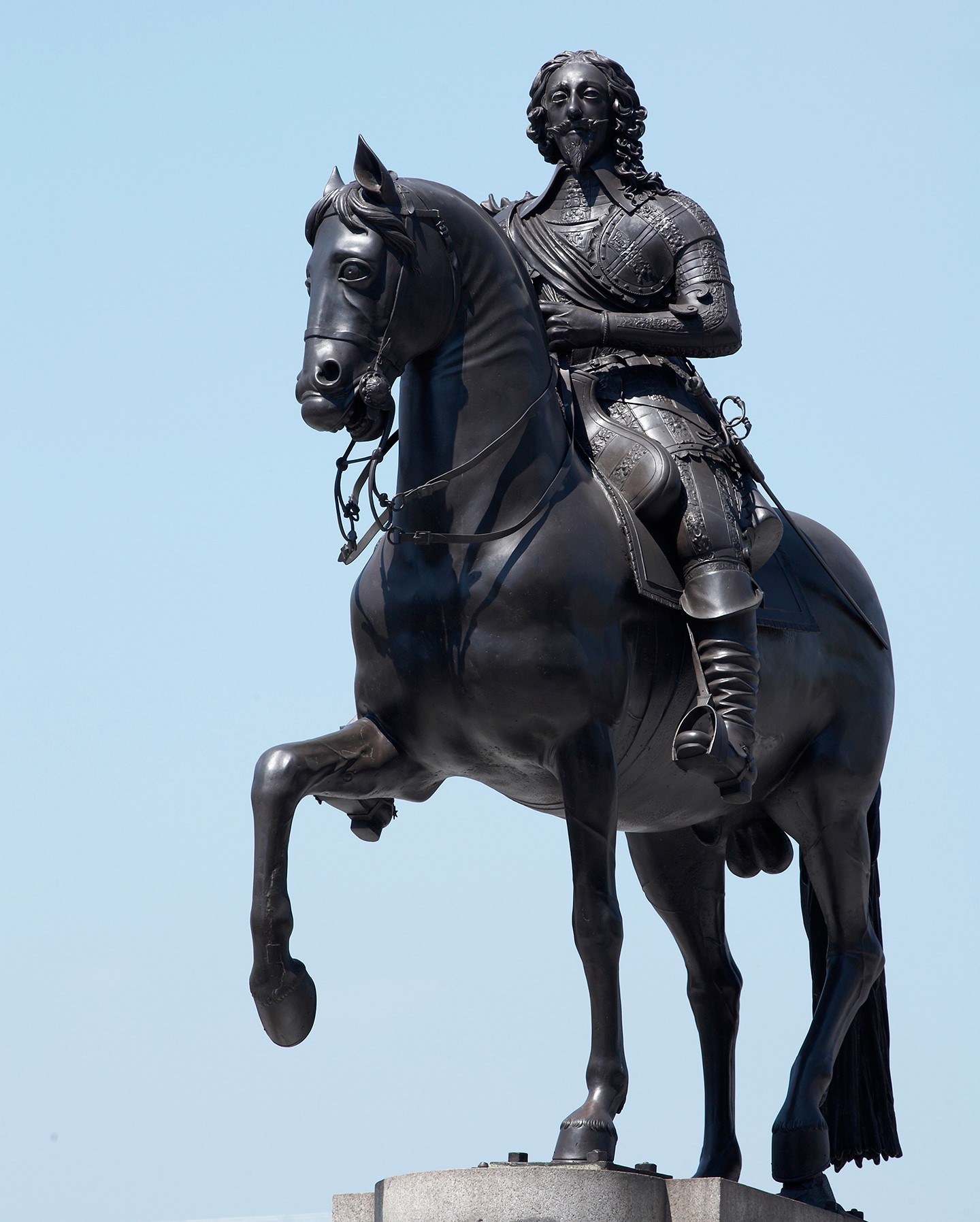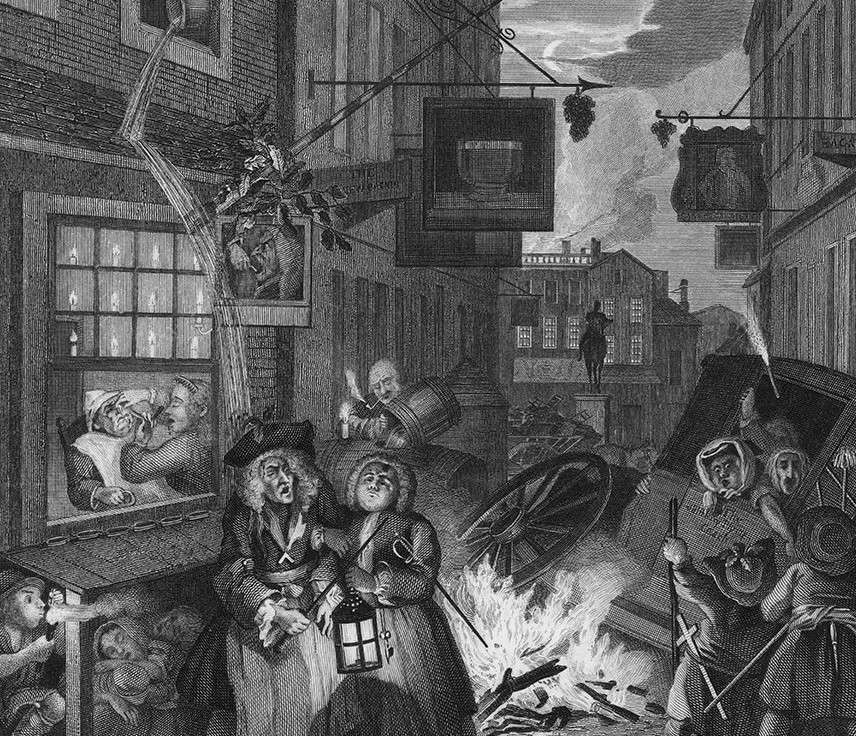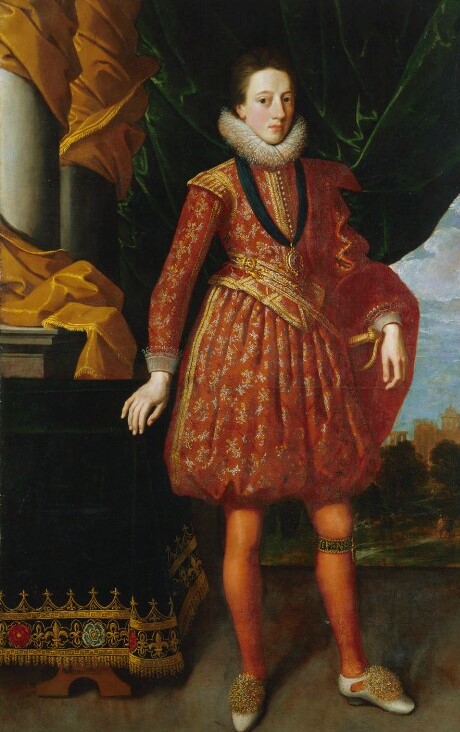
© National Portrait Gallery, London
Charles I was born in 1600, the second son of James VI of Scotland (later James I) and Anne of Denmark. He was created Duke of York in 1605 and then Prince of Wales and Earl of Chester in 1616. He became heir apparent when his elder brother, Prince Henry, died in 1612.
Charles ascended the throne in March 1625 and two months later he married Princess Henrietta Maria, daughter of King Henry IV of France. They had six children together and Charles’s court became a model of happy family life. The king was passionate for the visual arts, and formed a great collection of paintings. His chief architect, Inigo Jones, helped to create a court style in architecture, decoration and in entertainments like masques, making Charles’s court one of the most cultivated and artistically advanced in Europe.
In the later 1620s Charles’s rule was marked by aggressive foreign policy, directed by George Villiers, the Duke of Buckingham. This saw ineffective English naval operations against first Spain and then France, despite the marriage alliance. Although these wars against Catholic powers were popular with the Protestant majority, Buckingham’s style of rule and the taxation required were not. The war policy was effectively ended when Buckingham was assassinated in Portsmouth, on 23 August 1628.
By 1629, Charles’s relationship with the House of Commons had grown so tense that he dismissed his second Parliament, resolving to rule without it. An 11 year personal rule followed during which Charles was unable to collect direct taxes and depended on Ship Money – a custom which he claimed was a royal prerogative – and the granting of monopolies over trades and manufactures.
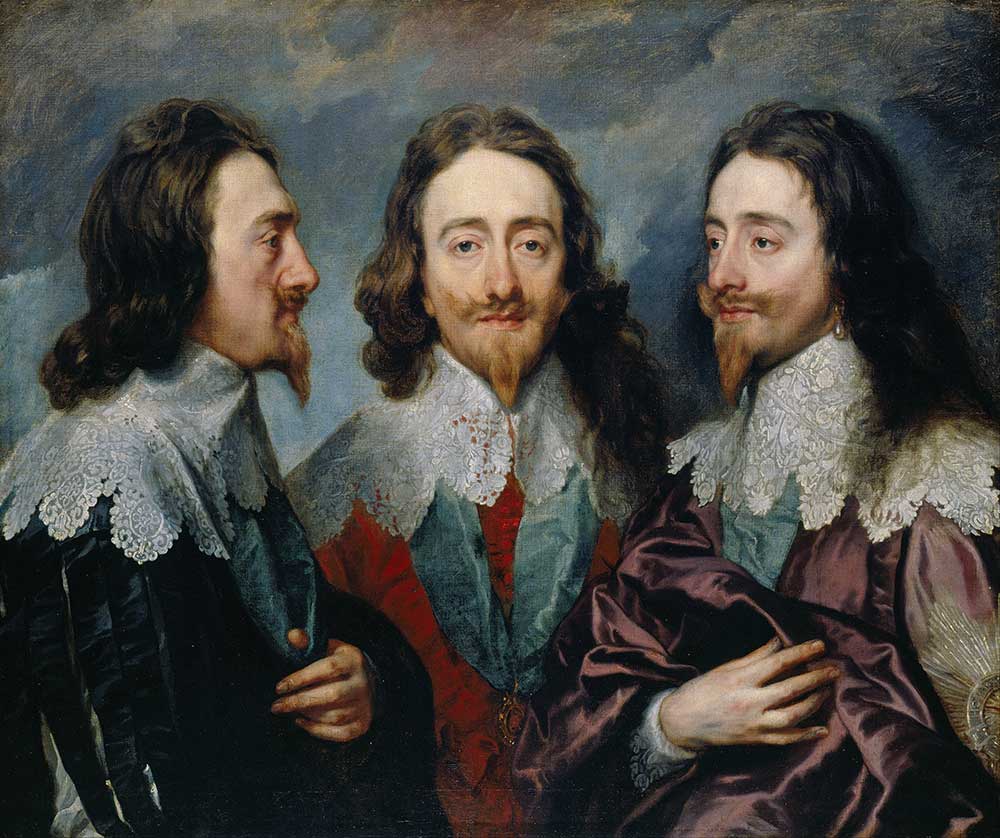
© Public Domain via Wikimedia Commons
Such financial measures were hugely unpopular, as were Charles’s religious policies – causing unrest that would pave the way for civil war. Charles favoured a more traditional, sacramental religion with practices that were reminiscent of Roman Catholicism. This was unacceptable to the Protestant majority of his subjects, in particular the Puritan wing of the church and the Scottish Presbyterians. Charles’s attempt to impose his religious policies in Scotland led to the collapse of royal authority there and was the catalyst for rebellion. The Covenanters (Scottish Presbyterians) raised an army of veteran mercenaries, and invaded northern England, capturing Newcastle in 1640.
Without an English Parliament, Charles had limited means to raise the revenue needed to go to war with the Scots, and so the king summoned what became known as the Long Parliament, which met in November 1640. But Charles’s nominees suffered heavy defeats, and Parliament became dominated by those opposed to the king’s policies and style of rule, led by John Pym and other Puritans. By 1642 relations had broken down so far that Charles tried to arrest five leading MPs – but they fled. Charles eventually withdrew from London and both sides began to prepare for conflict. The king raised his standard at Nottingham, on 22 August 1642.
Charles established his headquarters at Oxford and for two years the conflict was effectively a stalemate. However, Parliament had access to more taxable resources than Charles, and better commanders in Sir Thomas Fairfax and Oliver Cromwell. Parliament’s formation of the New Model Army in 1645 and the decisive defeat of Charles’s army in the battle of Naseby, doomed his cause. Oxford fell to the Parliamentarians in June 1646. Charles fled in disguise and surrendered himself to a Scottish ‘Covenanter’ army at Newark. They eventually sold him to Parliament as a prisoner for £100,000, in June 1647.
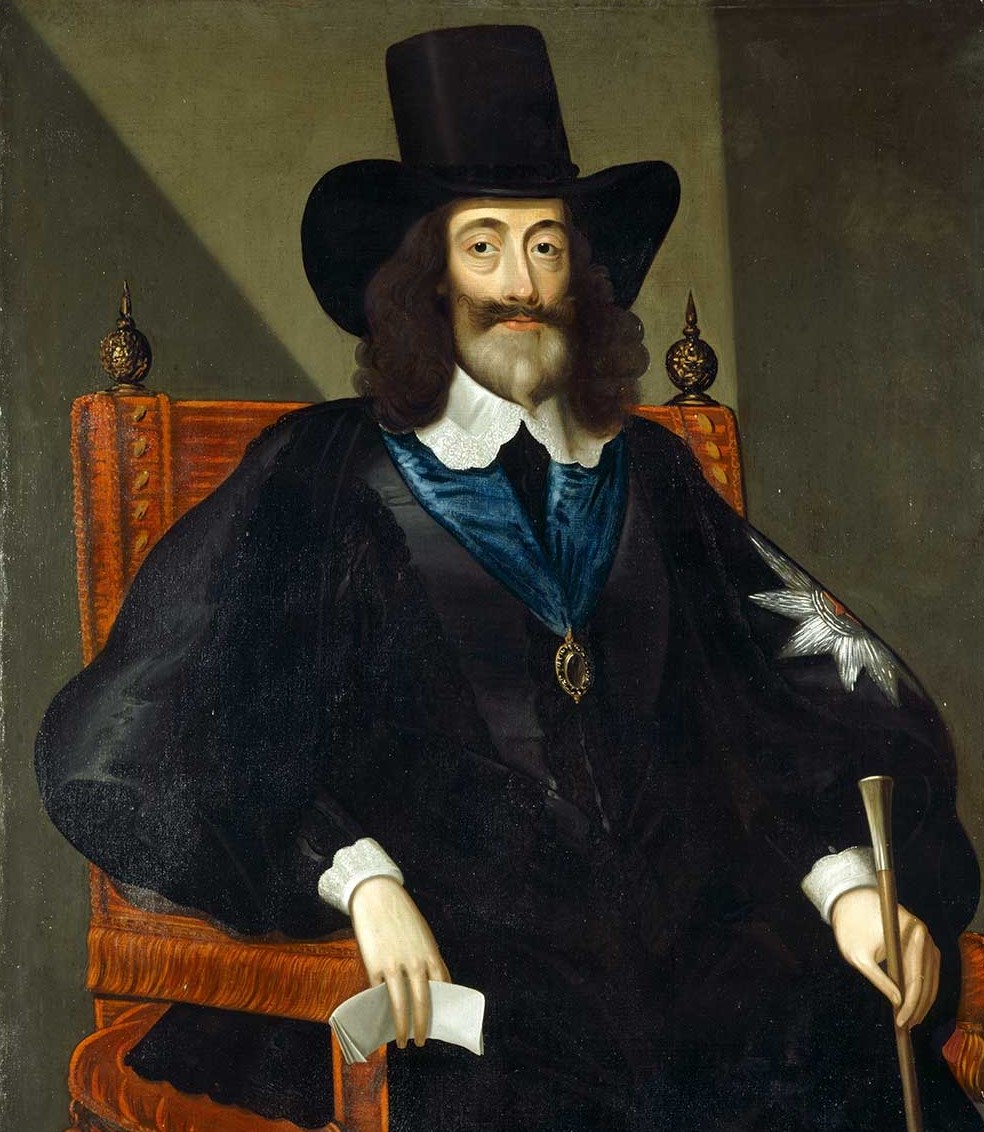
Charles’s captors may have been willing to restore a reformed monarchy, but his unwillingness to compromise rendered the negotiations fruitless. Royalist rebellions in 1648 led to the outbreak of renewed conflict – the Second Civil War. In this newly poisoned atmosphere, Parliament was determined to put Charles on trial. In January 1649, he was found guilty for making war on his own people, and was executed outside the Banqueting House of Whitehall Palace. He was buried in St George’s Chapel, Windsor Castle.
Most modern historians’ assessments of Charles have emphasised his failings: his inflexibility, his assumption of his divinely ordained right to rule, and his readiness to abandon agreements with those he regarded as his inferiors. Some recent historians have explored revisionist viewpoints, interpreting Charles as a principled figure dogged by extremist opponents, and appalling luck. Few historians have doubted the king’s contribution to the arts as a patron and collector, and many note his qualities as a private individual and family man. These sympathetic sides to Charles’s character underline the tragic nature of his story and that of his unfortunate reign.
